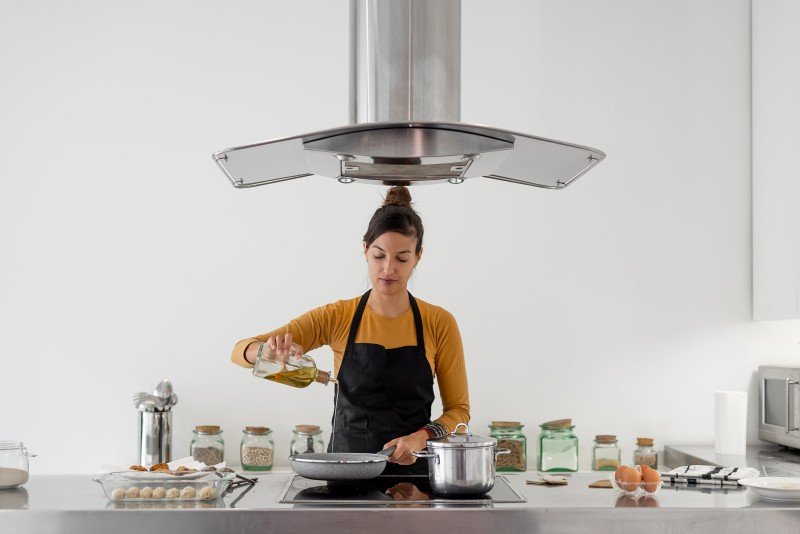Understanding Ovens and Hobs: A Comprehensive Guide
Cooking has come a long way because the days of open flames and rudimentary cooking methods. Today, ovens and hobs are at the heart of modern-day kitchens, offering flexibility, performance, and a variety of cooking alternatives. Whether you are an amateur cook or a seasoned chef, comprehending the distinctions, features, and functions of these home appliances is essential for optimizing cooking potential. This short article breaks down the different kinds of ovens and hobs readily available on the market, their performances, and how to pick the best devices for your kitchen.
What is an Oven?
An oven is an enclosed area designed for heating and cooking food, providing numerous approaches such as baking, roasting, and broiling. Ovens are available in different types, each serving special cooking choices and requirements.
Types of Ovens
Conventional Ovens:
- Use gas or electrical power for heating.
- Typically include a heating component at the top and bottom.
- Perfect for standard baking jobs.
Convection Ovens:
- Use a fan to distribute hot air, promoting even cooking.
- Ideal for baking, roasting, and reheating.
- Reduces cooking time and enhances taste.
Steam Ovens:
- Utilize steam to prepare food while keeping moisture and nutrients.
- Outstanding for health-conscious cooking, such as vegetables and fish.
Microwave Ovens:
- Use electro-magnetic radiation to heat food rapidly.
- Best for reheating leftovers or cooking simple meals.
Wall Ovens:
- Built into the wall, saving space in the kitchen.
- Offered in different setups, consisting of single or double ovens.
Secret Features of Ovens
- Temperature Control: Precision heating for various baking and preparing procedures.
- Self-Cleaning Options: Some models have self-cleaning modes that use heats to burn food residue.
- Smart Features: Wi-Fi connection enables remote pre-heating, monitoring, and recipe management through smartphones.
What is a Hob?
A hob is a cooking surface, frequently referred to as a stove or cooktop, where pots and pans is placed for heating. Hobs are available in various materials, sizes, and heating techniques, accommodating diverse cooking requirements.
Types of Hobs
Gas Hobs:
- Utilize gas burners for direct flame cooking.
- Offer accurate temperature level control and are preferred by many professional chefs.
Electric Hobs:
- Use electric coils or smooth tops.
- Some designs are equipped with induction technology, offering fast heating through electro-magnetic energy.
Induction Hobs:
- Cookware must be made from magnetic products.
- Very energy-efficient, providing fast heat and reducing burn dangers.
Ceramic Hobs:
- Feature a glass-ceramic surface area with heating components underneath.
- Easy to tidy however can be less energy-efficient than induction hobs.
Secret Features of Hobs
- Burner Configuration: Varies from 2 to six burners, depending upon model and size.
- Power Levels: Multiple settings permit higher precision in cooking.
- Security Features: Options like flame failure gadgets and kid lock settings ensure security throughout cooking.
Selecting the Right Oven and Hob
Selecting the best oven and hob for your kitchen includes careful consideration of numerous aspects. Below is a list of concerns to direct your selection process:
- What is your primary cooking design?
- How much kitchen area do you have?
- What is your budget plan?
- Do you choose gas or electric devices?
- Are extra features like smart connection essential to you?
Table Summary of Key Differences Between Ovens and Hobs
| Function | Oven | Hob |
|---|---|---|
| Functions | Baking, roasting, broiling | Boiling, frying, sautéing |
| Cooking Method | Enclosed heat | Direct cooking surface area |
| Temperature Control | Adjustable settings | Range settings |
| Types | Electric, gas, convection, microwave | Gas, electric, induction, ceramic |
| Cooking Capacity | Larger (can cook multiple dishes) | Smaller (focus on immediate cooking) |
| Cleaning | Self-cleaning options offered | Usually manual cleaning needed |
Maintenance Tips for Ovens and Hobs
Appropriate care and upkeep of your cooking home appliances extend their lifespan and effectiveness. Here are necessary upkeep pointers:
Regular Cleaning:
- Clean the oven interior after each use to prevent residue accumulation.
- Wipe down hob surfaces after cooking to avoid discolorations.
Examine Seals:
- Ensure the oven door seals are undamaged to maintain energy efficiency.
- Replace worn-out gaskets and seals as needed.
Inspect Burners and Elements:
- For gas hobs, check for clogs in burners.
- For electric hobs, inspect coils and surface areas for signs of wear.
FAQs
Can I utilize any cookware on induction hobs?
- No, induction hobs just work with magnetic pots and pans, such as cast iron or stainless-steel.
What is the most energy-efficient cooking home appliance?
- Induction hobs are generally the most energy-efficient option, utilizing less energy than traditional gas or electric designs.
How typically should I clean my oven?
- It's advisable to clean your oven every couple of months, or more regularly if you utilize it frequently.
Can I install an oven and hob independently?
- Yes, both home appliances can be installed independently based upon kitchen design and space.
What should I think about when installing a gas hob?
- Make sure proper ventilation and abide by local security codes. It is recommended to have a professional install gas devices.
Understanding the features, types, and upkeep of ovens and hobs can significantly improve your cooking experiences. Selecting the ideal appliances tailored to your cooking design, kitchen space, and safety needs can make all the distinction in achieving culinary success. By being notified about Microwave Oven With Hob , you can take pleasure in a more effective and enjoyable cooking journey, bringing scrumptious meals to your table with ease.

